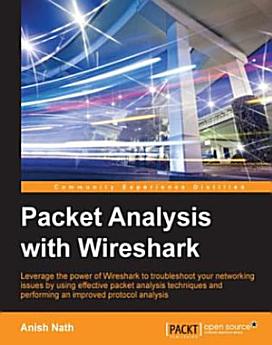Packet Analysis with Wireshark
เกี่ยวกับ eBook เล่มนี้
If you are a network or system administrator who wants to effectively capture packets, a security consultant who wants to audit packet flows, or a white hat hacker who wants to view sensitive information and remediate it, this book is for you. This book requires decoding skills and a basic understanding of networking.
What You Will LearnUtilize Wireshark's advanced features to analyze packet capturesLocate the vulnerabilities in an application serverGet to know more about protocols such as DHCPv6, DHCP, DNS, SNMP, and HTTP with WiresharkCapture network packets with tcpdump and snoop with examplesFind out about security aspects such as OS-level ARP scanningSet up 802.11 WLAN captures and discover more about the WAN protocolEnhance your troubleshooting skills by understanding practical TCP/IP handshake and state diagramsIn DetailWireshark provides a very useful way to decode an RFC and examine it. The packet captures displayed in Wireshark give you an insight into the security and flaws of different protocols, which will help you perform the security research and protocol debugging.
The book starts by introducing you to various packet analyzers and helping you find out which one best suits your needs. You will learn how to use the command line and the Wireshark GUI to capture packets by employing filters. Moving on, you will acquire knowledge about TCP/IP communication and its use cases. You will then get an understanding of the SSL/TLS flow with Wireshark and tackle the associated problems with it. Next, you will perform analysis on application-related protocols. We follow this with some best practices to analyze wireless traffic. By the end of the book, you will have developed the skills needed for you to identify packets for malicious attacks, intrusions, and other malware attacks.
Style and approachThis is an easy-to-follow guide packed with illustrations and equipped with lab exercises to help you reproduce scenarios using a sample program and command lines.
การให้คะแนนและรีวิว
เกี่ยวกับผู้แต่ง
Anish Nath is a software engineer who has more than 10 years of experience. He works at CISCO, and at CISCO, he started using Wireshark for the first time. He is thankful to CISCO. He doesn't speak much, but likes to explore new things that he has not tried or not thought of. He also tries his best to be successful at this. Though he fails a lot of time, this gives him more experience, and when success comes, he thanks all of his efforts that had failed him initially. You can reach him at https://in.linkedin.com/in/anishnath, and his Twitter handle is @anish2good.







